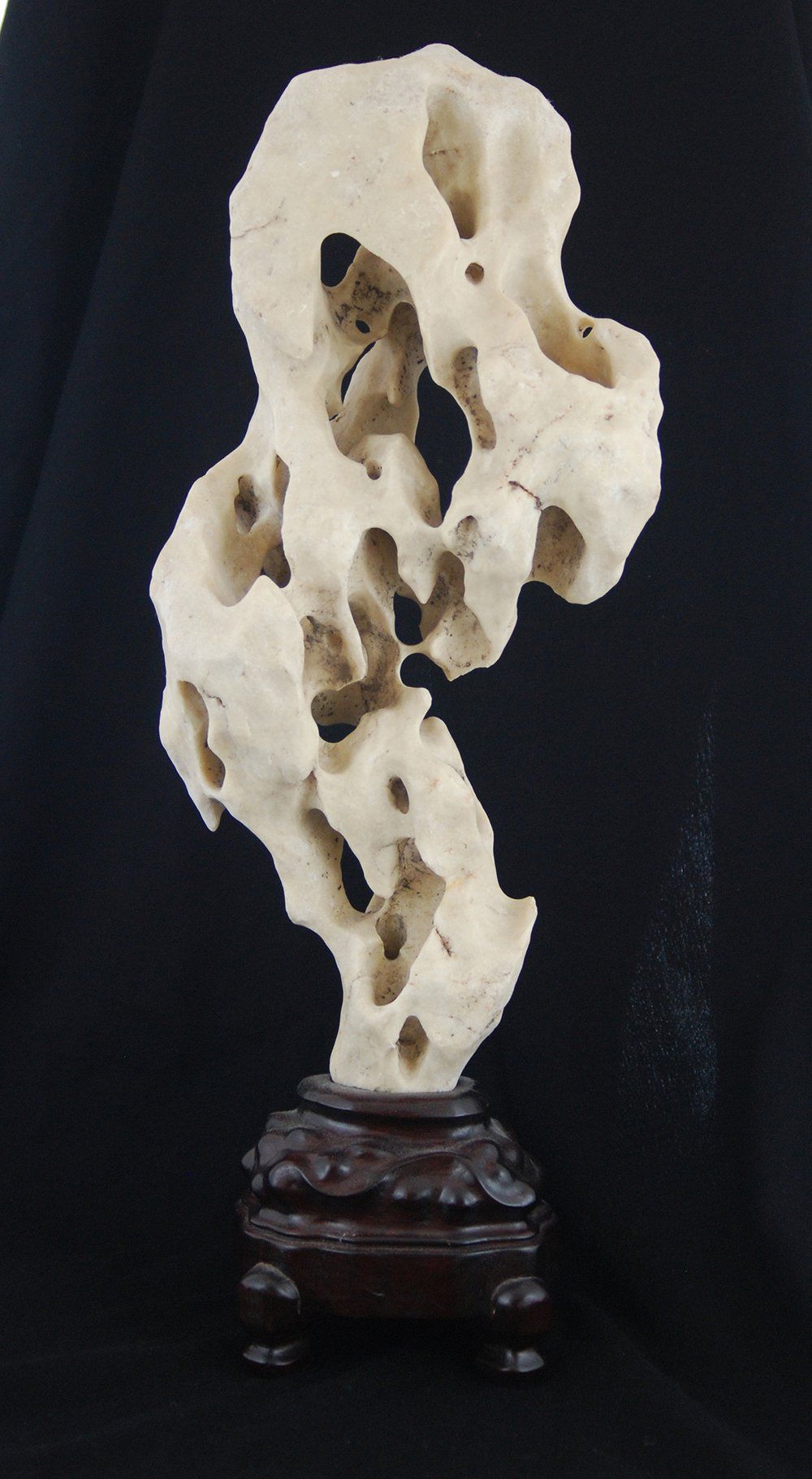Worked versus Unworked Stones
Examines the role of enhanced stones from past to present
By Thomas S. Elias, July, 2016
There is a perception among many Western stone collectors that a worked stone, one that has been altered in any way, is inferior and that it fails to follow Asian principles for acceptable viewing stones. Some Western collectors even believe that there is a degree of deception involved in worked stones. This is a naïve belief that is not supported by the Asian literature or practices. Certainly, most collectors prefer a stone that is totally natural and formed by elements of nature. These stones are rare and cannot be supplied in sufficient numbers to meet the demand for unusual and attractive stones to be used as objects of admiration and appreciation. Also, Western perceptions often do not take into consideration Chinese views and beliefs concerning worked stones.
Ancient stone carving precedes written history. Jade carvings date back to Neolithic times approximately 2000 to 3000 BCE and continued throughout the long history of China and other countries. Seal engraving, cutting the bottom of a small stone to create a name, appeared around 200 BCE. While stone appreciation in China had its beginnings early in its history, it flourished in the Tang and Song dynasties. Precious stones were brought into gardens and estate landscapes as key elements of garden design. Smaller unusual stones eventually were brought into homes, especially the studios of scholars, artists, and other literati. It was not unusual for an owner to inscribe his name or a short verse on a stone. This was a way of showing admiration for a stone, and also a means of establishing ownership, which in turn provided evidence of the provenance of a stone. Some of the most valued stones in Chinese stone appreciation are ones that were inscribed during the Imperial period. Many of the larger stones used in garden settings were worked to establish a more stable base so they could be displayed in a balanced vertical position.
The manipulation of stones to improve their appearance is well documented in early Chinese literature. Edward H. Schafer’s superb English language reference, Tu Wan’s Stone Catalogue of Cloudy Forest, provides ample evidence of worked stones. In particular, Chapter four, Technology and Petrology, discusses the various tools and methods used to work stones. Schafer states that “Twelfth-century connoisseurs seem not to have put a premium on “natural stones. The Stone Catalogue tells repeatedly that the artistry of the specimens must be enhanced by human hands and metal tools”. Some stones were viewed as works of art with no intent at deception.


